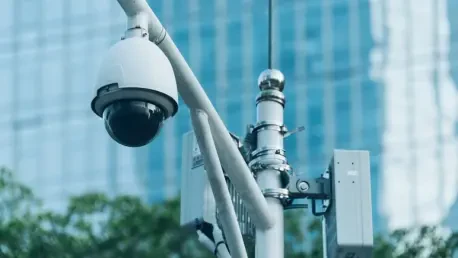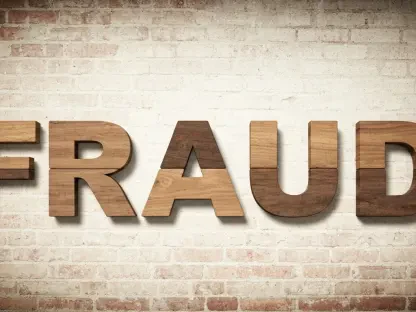I’m thrilled to sit down with Donald Gainsborough, a political savant and leader in policy and legislation, who heads Government Curated. With his deep expertise in urban policy and technology integration, Donald offers unparalleled insights into the evolving landscape of public housing initiatives. Today, we’ll dive into the controversial Big Apple Connect program in New York City, exploring its impact on residents, the financial and ethical implications of its recent renewal, and the broader tensions between city leadership and legislative oversight. Our conversation will touch on themes like digital access for underserved communities, the intersection of technology and surveillance, and the challenges of balancing innovation with accountability.
Can you start by giving us an overview of the Big Apple Connect program and who it aims to serve in New York City?
Absolutely, Debora. Big Apple Connect is a city initiative launched to provide free internet access to residents of public housing in New York City. Right now, it serves about 330,000 people living in developments managed by the New York City Housing Authority, often referred to as NYCHA. The program partners with major telecom companies like Altice USA and Spectrum to deliver broadband services, addressing the digital divide that disproportionately affects low-income communities. On paper, it’s a vital step toward ensuring equitable access to online resources, from education to job opportunities, but as we’ve seen, it comes with layers of complexity and controversy.
What’s your take on the timing of Mayor Adams’ announcement to renew the program for three more years, and why has it sparked criticism?
The timing of the announcement, made on the first day of Mayor Adams’ lame-duck period, raises eyebrows. It came just one day before a scheduled City Council oversight hearing focused on scrutinizing this very program. Critics argue that this move was a deliberate attempt to sidestep accountability and limit the Council’s ability to influence the decision. It’s seen by some as a lack of respect for the legislative process, almost like pre-empting any tough questions or pushback that might have come up during that hearing. It’s a bold, and some would say risky, political maneuver.
Speaking of costs, the program runs about $38 million a year. Can you break down what this renewal means financially for the city over the next three years?
Sure, Debora. At $38 million annually, extending Big Apple Connect until June 2028 means the city is committing to roughly $114 million over that period. That’s a significant chunk of the budget, especially when you consider that this decision binds the hands of the next mayor, who will inherit this financial obligation without having had a say in it. It’s not just about the dollars—it’s about the precedent it sets for long-term commitments made at the tail end of an administration. That kind of spending needs to be weighed against other pressing needs in the city, like housing repairs or social services.
There’s been concern about the NYPD using Big Apple Connect for video surveillance in public housing. Can you explain how this ties into the program?
This is one of the more troubling aspects. The NYPD has integrated cameras in NYCHA developments with Big Apple Connect’s infrastructure, linking them to their Domain Awareness System. This system is a massive data hub that pulls together information on New Yorkers, often paired with facial recognition and predictive policing tools. Essentially, the internet program doubles as a surveillance network, allowing real-time monitoring of public housing residents. What’s striking is that this component wasn’t highlighted in the mayor’s renewal announcement, which raises questions about transparency and whether residents were fully informed or consented to this level of oversight.
How do you think public housing residents might feel about this kind of monitoring tied to a program meant to provide internet access?
I think many residents would feel uneasy, if not outright betrayed. When a program is presented as a public good—free internet to bridge the digital gap—there’s an expectation of trust. But layering on surveillance, especially without clear communication, can erode that trust. For communities already dealing with over-policing and systemic inequities, this could feel like another form of intrusion rather than support. It’s not hard to imagine residents wondering if the trade-off for connectivity is worth having their every move potentially watched and analyzed.
The renewal also contrasts with past proposals like the Internet Master Plan from a previous administration. Can you tell us what that plan entailed and how it differed from Big Apple Connect?
The Internet Master Plan, developed under former Mayor Bill de Blasio, took a fundamentally different approach to broadband access. It aimed to build a city-owned, open-access fiber network by partnering with community-based telecom providers rather than relying on big corporate players like Altice USA and Spectrum. The idea was to create a more sustainable, equitable system that prioritized local control and long-term affordability over short-term contracts with established giants. Big Apple Connect, by contrast, leans on those existing networks, which some argue limits innovation and locks the city into less flexible, more expensive arrangements.
There’s clear tension between Mayor Adams and the City Council, with some members accusing him of ignoring their role. How do you see this dynamic playing out in the context of this program?
This tension is emblematic of a broader struggle for power between the mayor’s office and the City Council. Council members, like Chris Banks who chairs the public housing committee, have called out Adams for acting unilaterally—some even used the term “dictator”—by pushing through this renewal without legislative input. The Council sees itself as a co-equal branch of government, and moves like this can feel like a direct challenge to their authority. It’s a messy situation because while the mayor has the executive power to make these calls, bypassing oversight risks alienating key stakeholders and could complicate future collaborations on other critical issues.
What is your forecast for the future of programs like Big Apple Connect, especially as technology and privacy concerns continue to intersect with public policy?
Looking ahead, I think programs like Big Apple Connect will face increasing scrutiny as technology becomes more embedded in public services. The digital divide isn’t going away, so the demand for accessible internet will only grow, but so will the push for transparency and resident input on how these initiatives are rolled out. Privacy concerns, especially around surveillance, will likely become a central battleground—cities will need to balance the benefits of tech with the rights of their citizens. My forecast is that we’ll see more hybrid models, blending public-private partnerships with stronger community oversight, but it’ll take real political will to navigate the ethical minefield and rebuild trust with those who feel most impacted.









